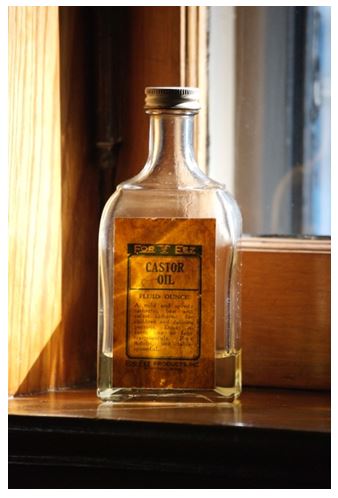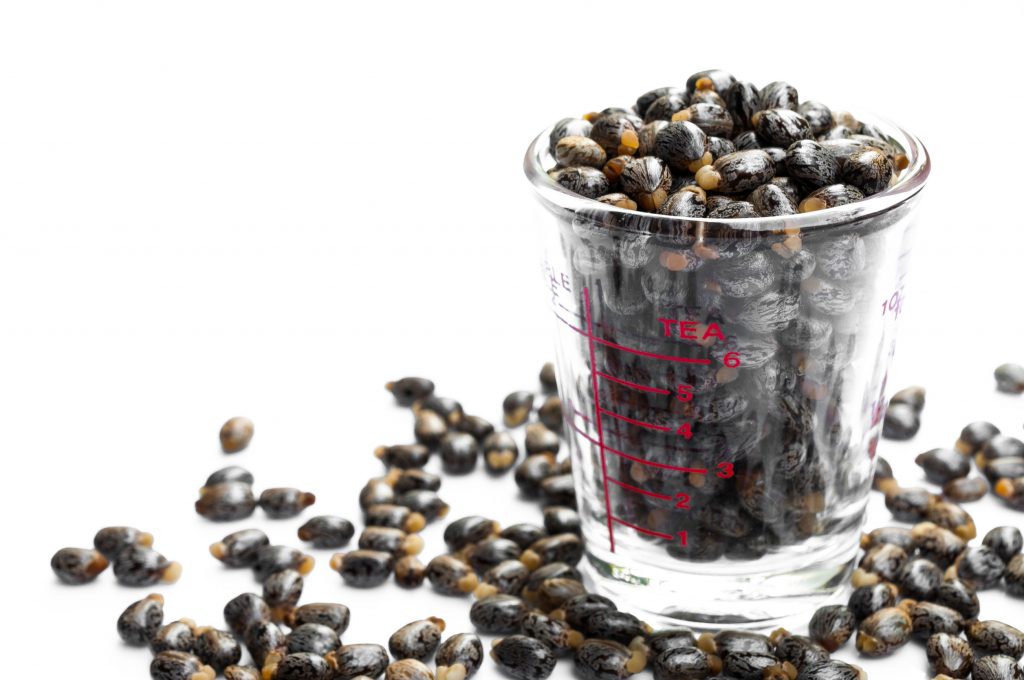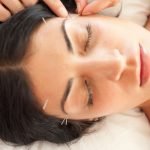Vis Medicatrix Naturae
Marisol Teijeiro, ND
In the early 1900s, naturopathic medicine migrated to North America where the conventional medicine system was in full force. Imagine – a world that had since been a mix of snake oil salesmen, Native American shamans, witch doctors, and barbers that doubled as dentists.
When Benedict Lust came over to America, he spearheaded the naturopathic movement and a simultaneous paradigm shift, which in the near future would include the likes of Otis G. Carroll, Harold Dick, John Bastyr, and all the major influences of the North American genesis of naturopathic medicine.
It was also an incredibly tumultuous time, nicknamed the Roaring 20s for a reason. Like the growl of a lion, this decade brought in a revolution of modernization and liberalization, but also restriction. It was a mixing of currents, both positive and negative, in an attempt to rebalance.
There were many monumental events shaping North America at this time: Prohibition (1920-1933), the Great Depression (1929-1939), World War I (1914-1918), and the rise of fascism (1922-1943). There were other movements occurring at the same time, such as the modern dance revolution with Martha Graham, and the beginning of yoga infiltrating North America.
Edgar Cayce Movement
One of these movements included the rise in popularity of the medical medium, Edgar Cayce, also known as the illustrious bedside healer. He was said to go into a trance, embodying the person’s energy, then coming to an immediate prescription, sourced not from his own mind but from the Akashic Records.1
The one prescription that stood the test of time – and was seen in every one of his protocols for the 1800+ people he cared for – was the castor oil pack. Somehow this simple treatment seemed to be the staple and foundation of his protocols.
Having this esoteric healer as the forefather of these castor oil packs in North America could be argued as a detriment to the professional reputation of the packs. Some regarded Edgar Cayce as a “quack” and his treatments akin to “snake oil” or “hokey” or “woo-woo” medicine, which gave these packs the appearance of being very unconventional.
But the fact is that Cayce was not the first to use this illustrious oil in combination with a pack as a healing treatment. They were first documented in traditional Ayurvedic and Chinese medical texts. The oil has enjoyed much praise from the Egyptian Ebers Papyrus,2 Hippocrates (aka the “father of medicine”), the famous Greek philosopher Galen,3 and even the Bible, in which castor oil was said to be used as an anointing oil by Jesus Christ. Plus, there were many traditional uses of the oil in the Caribbean and Slavic countries.
The castor oil pack is an evolution of the use of castor oil, designed to maximize its potential. This will be the focus of discussion in this article.
The Castor Oil Pack
Castor oil has had a place in medicine since the beginning of time. Its main usage was topical; oral was reserved only as a laxative treatment.

In dermatological medicine, castor oil has an immense appeal. One only needs to take a quick look at cosmetic formulas to see the widespread use of castor oil.
As mentioned, the famed psychic and healer, Edgar Cayce, began to use castor oil in the early 1900s, specifically over the liver and under the right ribcage, in combination with a pack placed directly on the abdomen. The packs reportedly helped thousands of his patients improve their health, according to Dr McGarey in the book The Oil that Heals, in which he reviews Edgar Cayce’s patient notes as well as his own experiences with castor oil packs. The take-home points include the direct effect of castor oil packs on stimulating the parasympathetic nervous system and the penetration of the oil into the tissues, which stimulates lymphatic flow and reduces inflammation via the Peyer’s patches.
These effects translate into enhanced digestion, assimilation, and elimination for those who use them. Castor oil packs – the most important naturopathic application of the oil – are recommended for many disorders, from irritable bowel syndrome (IBS), inflammatory bowel diseases (IBD) such as Crohn’s and colitis, constipation, a weakened immune system, gastritis, GERD, stress, anxiety, general detoxification, hormonal dysregulation, infertility, cancer, and basically any condition other than pregnancy.
One final note worthy of mention was McGarey’s insight into the ability of the castor oil pack to raise the “consciousness” of patients, preparing them to heal.4 This point is interesting, as castor oil was used as an anointing oil by the clergy in order to elevate them closer to God as they took on a higher role; it was used similarly by kings and queens as they were coronated, guiding the leader to an elevated consciousness.
However, helping patients on their healing journey requires more than just anecdotal observation. Present-day empirical evidence is supported by Cayce, McGregor, and countless naturopathic doctors and alternative health professionals recommending castor oil packs.
One study, published in the Journal of Naturopathic Medicine, describes the enhancement of T11 cells 7 hours after a castor oil pack treatment.5
Various animal models compared topical application of castor oil to the highly documented capsaicin.6 Castor oil proved to be as effective as capsaicin (and without the irritating rubefacient effect) in reducing inflammation and edema. It accomplished this by stimulating the lymphatic system and reducing the sensation of pain by decreasing substance P, a nervous system neurotransmitter.6 The same mechanism of action occurs in an acupuncture treatment and is a reason why castor oil packs are often used on strains, sprains, and arthritic joints.
In a mouse study, castor oil was shown to promote contractility and peristalsis via stimulation of PGE3 receptors on smooth muscle.2 Castor oil has also been shown in rats to support nitric oxide production in the intestine,7 which could account for its ability to stimulate bowel movements. The oil’s effects on nitric oxide might also promote circulatory flow to the intestine as well as provide protective mechanisms, such as antimicrobial actions8 and biofilm breakdown.
In 2011 a study was conducted in 2 nursing homes, examining the effects of castor oil packs on elderly patients with chronic constipation.9 Noted improvements from using the packs included decreased symptoms of constipation, and with none of the uncomfortable side effects of traditional laxatives, such as cramping or inability to hold stools.9
In my clinic, case studies were conducted on patients undertaking a month-long cleanse, and our findings were presented at the 2018 Annual Environmental Health Symposium in Arizona.10 All participants were given cleansing diet recommendations, supplementation, and colon hydrotherapy, but only 1 of the 2 groups used castor oil packs. Patients were tested 2 weeks before starting the cleanse, at the initiation of the cleanse, 2 weeks into the cleanse, at the end of the cleanse (4 weeks), and 2 weeks post-cleanse. Laboratory markers included CBC, electrolytes, liver enzymes, bilirubin (direct and indirect), urea, uric acid, and blood lipids. Significant improvements in conventional lab biomarkers (eg, decreases in liver enzymes, cholesterol, and uric acid) were noted in the group using the castor oil packs, as compared with those not using them.10
Does the “Lazy Man’s Pack” Work?
This time-honored treatment proves its efficacy over time, usage, and study. This therapy, however, has unfortunately been modified over time for ease of treatment rather than for maximum benefit. The biggest deterrent to castor oil packs has been that 12 steps are required, thus reducing compliance. This was a problem in my own clinical practice experience, and patients’ hesitancy to do them (thereby reducing the packs’ effectiveness) discourages practitioners from even prescribing them.

Some practitioners advise their patients to simply rub the castor oil over the abdomen, in hopes of achieving the same result as the packs. This has been given the title of the “lazy man’s castor oil pack.” The problem is that it’s just that – lazy – and the most important benefits of the pack are lost. The castor oil pack ensures that the oil deeply permeates the tissues, and it’s also what produces the neurological switch into the parasympathetic state and stimulates a vast amount of the beneficial neurohormones11,12 that commonly create the sense of well-being produced by the treatment.
Fortunately, castor oil has the ability, unlike other oils, to penetrate through the stratum corneum, which is the upper layer of the skin. In order to have an effect over the entire body, the castor oil must permeate into the dermis, which is separated from the stratum corneum by 3 more layers of epidermis – the granular layer, spinous layer, and basal layer. The dermis is where there is an abundance of blood vessels and lymph connections, allowing the flow of castor oil into the visceral parts of the body.
Mechanical support is required to assist the oil’s penetration through 4 layers of epidermis, ensuring maximum absorption and systemic benefit. In order for the castor oil to exert its full effect, it is imperative to follow the guidelines of modern transdermal therapy where an impermeable backing like the pack – or 4 layers of organic cotton flannel (similar to Edgar Cayce’s recommendation) – is used along with something that holds the pack in place, such as straps.13 These facilitate mechanical compression, tension, and preservation of natural bodily heat in the area, which opens the pores and allows the oil to enter the dermis through the roots of hair follicles. With no pack, castor oil will not penetrate as deeply and would act much more like a skin emollient; the full range of benefits of the oil cannot be reaped.
Is Heat Necessary for the Pack?
Adding extra heat is not necessary. What is necessary is the compress, which preserves the natural heat between the skin and compress.
Heat on its own is a modality in health care. We all know this from our hydrotherapy and physical therapy classes. Heat slows things down – not necessarily what we want to have happen in the digestive tract; however, we all know the benefit of a hot pack on dysmenorrhea.14
Much of the point of the castor oil pack is to restore good “flow” in the intestine, including putting the visceral organs into the parasympathetic state to facilitate their ever-important jobs of digestion, absorption, detoxification, and, of course, elimination.
Heat slows, whereas cold initially stimulates and then constricts. Neutral natural heat from a wrap can be extremely beneficial; no extra heat is needed.
Contraindicated During Periods?
There is much hearsay and myth surrounding the castor oil pack, and divided camps regarding its usage. The same is true regarding its use during menstruation, specifically dysmenorrhea. Some recommend never using the castor oil pack during menses, but let’s delve into the truth.
Castor oil stimulates the PGE3 receptors of the smooth muscle, which includes the intestine and the uterus.2 Thus, there is some merit to the claim that it could potentially aggravate menstrual cramping by stimulating the smooth muscle, causing increased contractions in an already weakened uterus.
The warning, however, is not based on cramping, but rather that a castor oil pack used during menstruation would cause blood thinning, leading to hemorrhage. Although any oil that reduces inflammation can reduce the viscosity of blood, it is highly unlikely in this case, as the quantities required to thin the blood are not present in a castor oil pack treatment. In addition, the stimulation of nitric oxide by castor oil packs has posed a speculated risk for hemorrhage. This is simply a fallacy, though, as castor oil doesn’t cause one to bleed more; it only increase nitric oxide in the area.
Why People Avoid Castor Oil
Castor oil is sticky, messy, thick, and stains material, and most castor oil pack protocols inadvertently worsen their appeal. A seeming million steps confuse the patient and create a barrier towards compliance. Ask any doctor, herbalist, or healing arts practitioner: If they rarely work with the packs, it is often because they did early on in their practice but their patients didn’t comply, and they didn’t find that it produced any benefits. But if there is no compliance, how can you pass judgment?
For me, I was turned off by the mess and by other practitioners lacking faith (albeit a multitude swore by it). But that’s why I’m here now teaching about it and promoting it. My preconceived notions prevented me from even trying the therapy despite the number of people who were telling me to do it and assuring me it would only help. The believers swear by it. For good reason, the castor oil pack is the easiest, most economical way to create your best health practice. It sets the foundation of healing. Without it, everything else takes longer, is less successful, and more expensive. Why wouldn’t you do it?
My First Castor Oil Pack Experience
So the first time I did the pack… I was sick – so sick that I couldn’t get out of bed. I have always been an uber-energetic person (if you know me), always full of piss and vinegar, and poo! Even though I was eating the right diet, taking the right supplements, and exercising, the stress of life – studying 80 hours a week and going back to naturopathic school with no science background – took its toll. Life was hard. I was alone. I’ll never forget a day that was so dark I was unable to get out of my bed. It killed me. At this point I had nothing to lose; it was the one time that I was willing to try anything to feel better. So, I decided to figure out a way to make my own pack, and make it easy.
I took an organic cotton bag I had received at a trade show with minimal dye on it, folded it in half, sewed it up, then removed the handles and made straps from them. I put it on my body with castor oil and immediately experienced a sensation that I had never felt before: Relaxation. I was so sympathetic-dominant that I had no idea what relaxed meant.
When I relaxed, I realized I could heal. I felt, well, a bit more energy compared to the doldrums I had been experiencing. One day at a time. I felt better, stronger. Day by day. I was getting better.
I was amazed that for the first time, I felt the sensation of time and life being in balance. I felt that everything that I was doing for myself was finally being used by my body to heal. I felt the castor oil pack, which I was so against doing for years, being the solution that helped me regain the FAITH in my body’s ability to heal. I wasn’t at the mercy of the conventional medical system’s need to cut, burn, and kill.
The castor oil pack became the foundation of my health protocol. Everything I did worked that much better, from dietary choices, fasting, supplements, exercise, meditation, and therapeutic treatments – everything was supercharged. So I took on the mission – to find the truth about this so-called Holy Grail of natural healing that I once ran away from – and now simply wanted to know everything about it.
I started delving into the science of what made castor oil packs tick. In school, it was a constant recommendation, yet no one would really clarify the exact mechanism of action. I am a science buff, a nerd; I like to know exactly how treatments and tools work. I don’t want hearsay, I want research. It doesn’t all have to be double-blind, placebo-controlled studies; I also delved into historical use, case studies, the application of castor oil in other industries, the function of the flannel on the skin. I basically dissected all components of the pack in order to learn its mechanism of action.
The pack is different from the oil, because this sacred ritual of going to bed with the flannel plays an important role in how it works.
How Does the Pack Work?
Castor oil’s main action is anti-inflammatory. It reduces pain via substance P,6 reduces edema by supporting lymphatic flow, improves microbial balance via nitric oxide stimulation and biofilm breakdown,15-17 stimulates peristalsis via PGE3 receptors in smooth muscle,2 and provides nutrition via omega-6 and omega-9 fatty acids, and vitamin E.18 The list goes on and on.
The pack – the actual cotton flannel – serves its own purpose. Thus, when people rub the castor oil on their skin and put a T-shirt on top, it simply doesn’t work. Compression comprises 50% of the actual treatment. The soft organic cotton sherpa, that feels delicate and fuzzy on the skin, stimulates c-tactile afferent nerves and deep sustained pressure receptors such as Merkel’s discs.19
This is the part of the therapy that stimulates oxytocin,11 dopamine13 and other areas of the brain that are stimulated when you feel the satisfaction from a fatty meal.20
If you haven’t worked with the pack yet, there is ample evidence suggesting you should try it. My advice: before prescribing it to a patient, try it on yourself. Once you do a castor oil pack, you will never go back. That’ll be all you need!
Financial Disclosures: Dr Marisol Teijeiro is a naturopathic doctor and has a financial interest in Queen of the Thrones Inc™ – creators of castor oil packs, products, and online education.
References:
- Edgar Cayce’s Association for Research and Enlightenment. Who Was Edgar Cayce? 2019. Available at: https://www.edgarcayce.org/. Accessed October 20, 2019.
- Tunaru S, Althoff TF, Nusing RM, et al. Castor oil induces laxation and uterus contraction via ricinoleic acid activating prostaglandin EP3 receptors. Proc Natl Acad Sci U S A. 2012;109(23):9179-9184.
- Lukong KE. Understanding breast cancer – The long and winding road. BBA Clin. 2017;7:64-77.
- McGarey, WA. The Oil That Heals: A Physician’s Successes With Castor Oil Treatments. Virginia Beach, VA: A.R.E. Press; 1993.
- Grady H. Immunomodulation through Castor Oil Packs. Journal of Naturopathic Medicine. 1998;7(1):84-89.
- Vieira C, Evangelista S, Cirillo R, et al. Effect of ricinoleic acid in acute and subchronic experimental models of inflammation. Mediators Inflamm. 2000;9(5):223-228.
- Mascolo N, Izzo AA, Autore G, et al. Nitric oxide and castor oil-induced diarrhea. J Pharmacol Exp Ther. 1994;268(1):291-295.
- Stasko N, McHale K, Hollenbach SJ, et al. Nitric Oxide-Releasing Macromolecule Exhibits Broad-Spectrum Antifungal Activity and Utility as a Topical Treatment for Superficial Fungal Infections. Antimicrob Agents Chemother. 2018;62(7). pii: e01026-17. doi: 10.1128/AAC.01026-17.
- Arslan GG, Eşer I. An examination of the effect of castor oil packs on constipation in the elderly. Complement Ther Clin Pract. 2011;17(1):58-62.
- Teijeiro M. Conventional Labs as Markers for Toxin Elimination. [Presentation.] Environmental Health Symposium, Arizona; 2018.
- Walker SC, Trotter PD, Swaney WT, et al. C-tactile afferents: Cutaneous mediators of oxytocin release during affiliative tactile interactions? Neuropeptides. 2017;64:27-38.
- Rolls ET, O’Doherty J, Kringelbach ML, et al. Representations of pleasant and painful touch in the human orbitofrontal and cingulate cortices. Cereb Cortex. 2003;13(3):308-317.
- Scheindlin S. Transdermal drug delivery: PAST, PRESENT, FUTURE. Mol Interv. 2004;4(6):308-312.
- Boyle W, Saine A. Lectures in Naturopathic Hydrotherapy. East Palestine, OH: Buckeye Naturopathic Press; 1988.
- Andrade IM, Andrade KM, Pisani MX, et al. Trial of an experimental castor oil solution for cleaning dentures. Braz Dent J. 2014;25(1):43-47.
- Badaró MM, Salles MM, Leite VMF, et al. Clinical trial for evaluation of Ricinus communis and sodium hypochlorite as denture cleanser. J Appl Oral Sci. 2017;25(3):324-334.
- Salles MM, Badaró MM, Arruda CN, et al. Antimicrobial activity of complete denture cleanser solutions based on sodium hypochlorite and Ricinus communis – a randomized clinical study. J Appl Oral Sci. 2015;23(6):637-642.
- Marwat SK, Rehman F, Khan EA, et al. Review – Ricinus cmmunis – Ethnomedicinal uses and pharmacological activities. Pak J Pharm Sci. 2017;30(5):1815-1827.
- Rolls ET. The affective and cognitive processing of touch, oral texture, and temperature in the brain. Neurosci Biobehav Rev. 2010;34(2):237-245.
- Löken LS, Wessberg J, Morrison I, et al. Coding of pleasant touch by unmyelinated afferents in humans. Nat Neurosci. 2009;12(5):547-548.
 Marisol Teijeiro, ND, is the director of Sanas Health Practice, in Petersburg, Ontario. Her focus is on cleansing and gut health, and she’s appropriately been dubbed the Queen of the Thrones™ by her patients as she’s helped thousands overcome digestive issues and take control of their toilet troubles. She has spearheaded the Queen of the Thrones™ line of lifestyle entrainment products that includes an easy, mess-less castor oil pack and castor oil in a glass bottle. Dr Marisol speaks internationally at educational conferences for practitioners, teaches a course on castor oil at CCNM, and will be releasing her debut guide book on digestive health, Oh Sh*t, later this year.
Marisol Teijeiro, ND, is the director of Sanas Health Practice, in Petersburg, Ontario. Her focus is on cleansing and gut health, and she’s appropriately been dubbed the Queen of the Thrones™ by her patients as she’s helped thousands overcome digestive issues and take control of their toilet troubles. She has spearheaded the Queen of the Thrones™ line of lifestyle entrainment products that includes an easy, mess-less castor oil pack and castor oil in a glass bottle. Dr Marisol speaks internationally at educational conferences for practitioners, teaches a course on castor oil at CCNM, and will be releasing her debut guide book on digestive health, Oh Sh*t, later this year.





